LIVING LEGACIES: COLLECTING IN THE POST-SOVIET PERIOD | 1990s - 2021
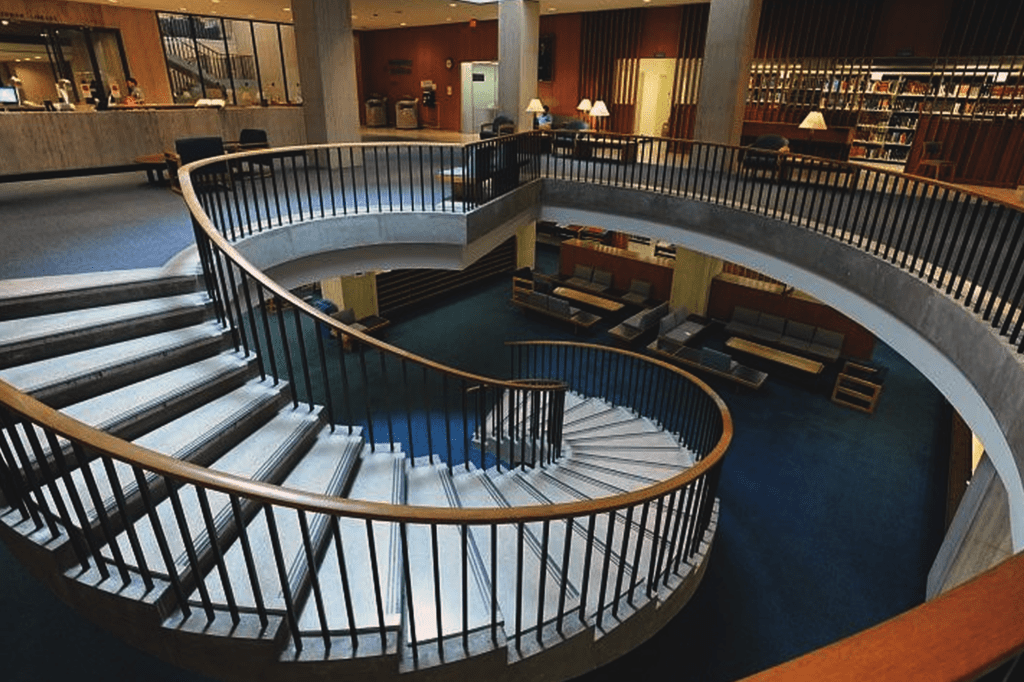
Foyer, Herbert H. Lehman Library
|
The year 2021 marks the 118th anniversary of active Slavic-language collecting at Columbia University Libraries, and the 75th since the creation of the position of Slavic & East European Librarian, while Cornell Library celebrates 137 years since its first documented gift of Russian materials. Today, librarians actively collect materials produced by and about the Slavic and non-Slavic peoples of East Central and Eastern Europe, the constituent peoples of the Former Soviet Union and its various former republics, as well as in the diaspora. These collections are among the largest and most comprehensive in North America, with Columbia’s holdings at more than 521,362 records for vernacular materials in sixty-six Eastern European languages (including forty-one languages of the Former Soviet Union), while Cornell’s holdings total 271,665 items, of which 70% are in Russian. Collaboration has allowed greater flexibility in the acquisition of distinctive retrospective materials and collections (so-called “destination collections”) that build on historical strengths (such as Cornell’s Human Sexuality Collections), or that support important curricular initiatives (such as Columbia’s Ukrainian Studies program). A small selection of recent collection-building acquisitions are depicted in the vignettes that follow. Some were purchases, many were gifts, but all serve to broaden and deepen the research resources available to current and future Columbia and Cornell students and researchers. |
Living Legacies: Collecting in the Post-Soviet Period: Rare Ucrainica

Cover of sheet music, undated, from the Surma collection. Photo by R. Davis.

Surma’s location on East 7th Street. Photo by R. Davis.
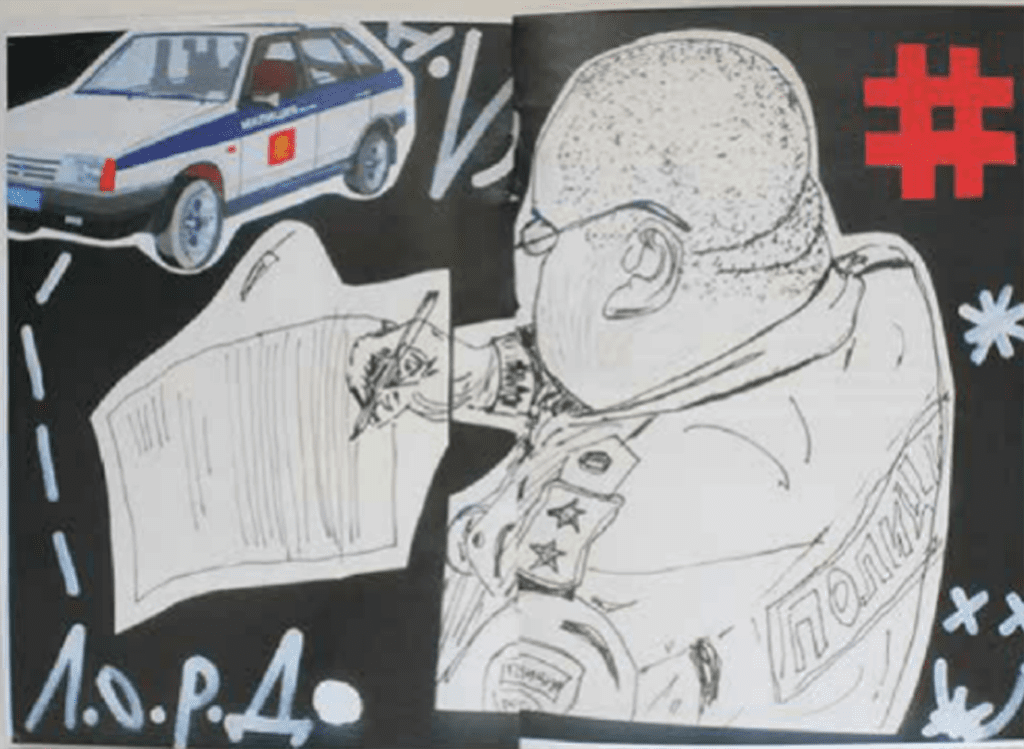
Monolog s gosudarstvom [Monologue with the State] (Kiev, 2017), a collection of 63 documentary stories from 43 artists on encounters with law enforcement in connection with graffiti, street art, and protest. Photo P. Chepyzhov
| Surma Book & Music Co. closed in 2016 after 98 years in business. From their basement book storage, 140 rare titles published in New York between 1910 and the 1950s were added to Columbia’s holdings. The Columbia Libraries regularly add unique examples of photographic albums (such as those documenting the peoples and villages of Sub-Carpathian Rus’-Ruthenia) as well as contemporary materials (such as archival material from the Euromaidan protests, Parliamentary elections, and examples of limited-press run Zines). |
Living Legacies: Collecting in the Post-Soviet Period: Modernist Destinations on the Heights & Ithaca
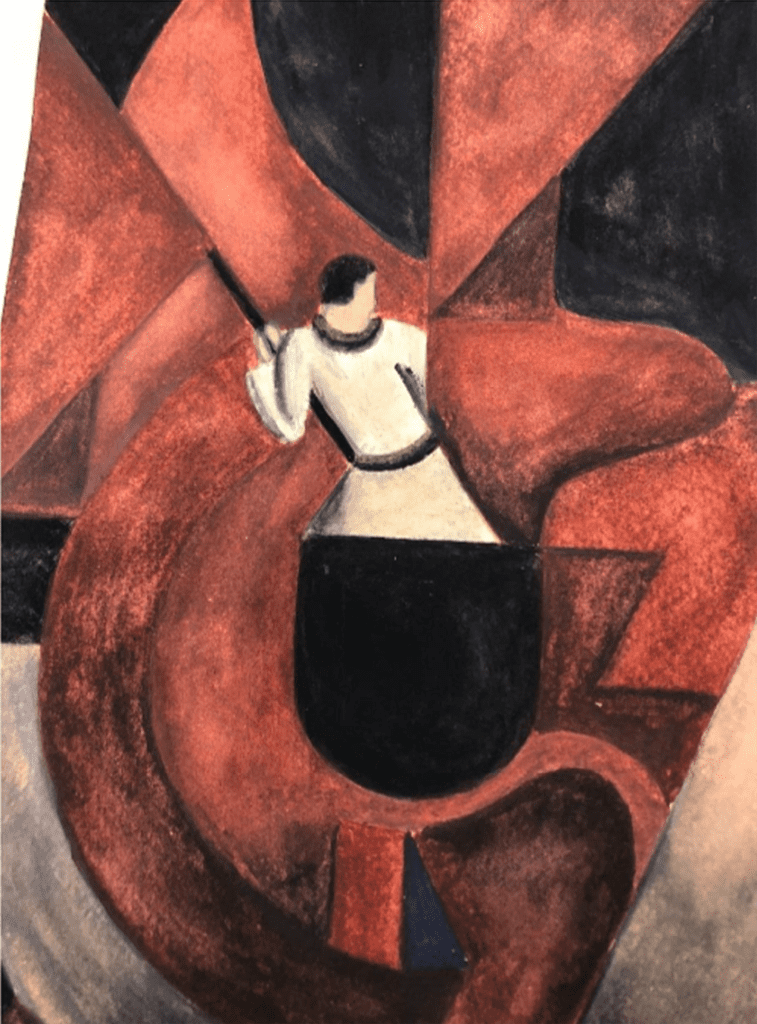
Kiril Zdanevich (1892-1969). Undated gouache acquired for the Bakhmeteff Archive, 2019. Photograph by R. Davis.
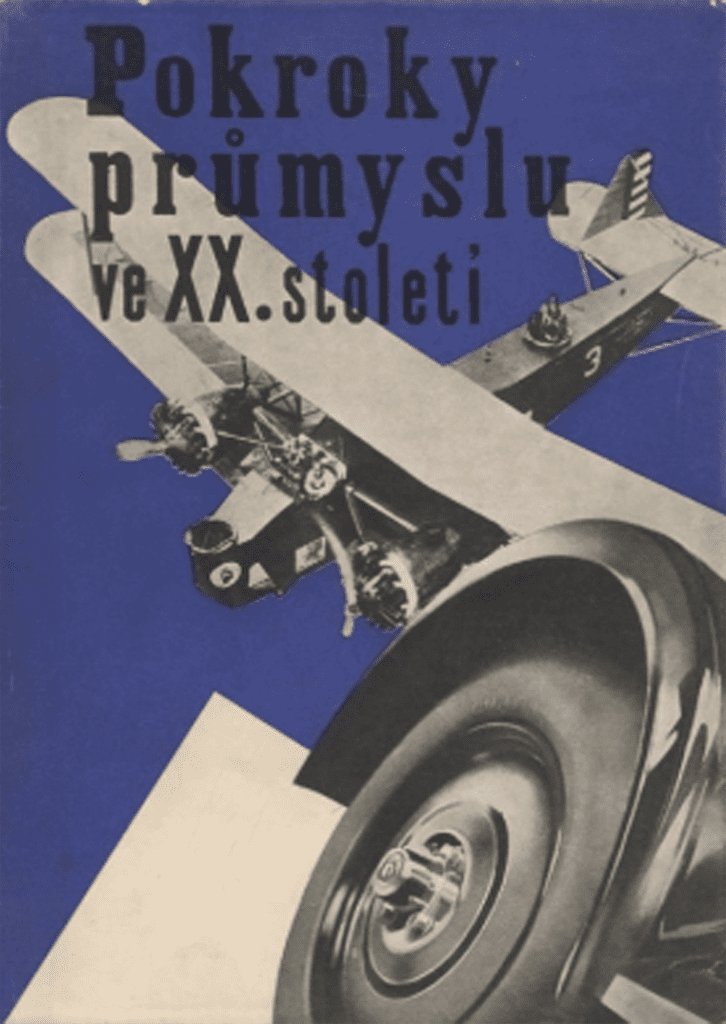
Dvacáté století co dalo lidstvu. Výsledky práce lidstva XX. Věku. (Praha, 1931-1934). [The Twentieth century: what it delivered to humanity: the results of human work in the 20th century]. Part 5: Prokroky průmyslu. [Advances in technology]. Photomontage wrappers by Vojtěch Tittelbach. Rare Book & Manuscipt Library. Acquired 2020.
|
Since 2008 a particular collecting focus has been the visually rich Eastern European modernist works on paper, particularly those from the inter-war period. Thanks to generous support from the Harriman Faculty Publications Fund, we have been able to document holdings that have established Columbia and Cornell as leading collections of Russian and Eastern European Modernism in North America. |
Living Legacies: Collecting in the Post-Soviet World: Early Imprints

Frontispiece of Evangelist Luke from Apostol (Pochaiv Lavra, 1759), engraving by Adam Goczemski (fl.1770-1784). Photo by F. Sciacca.
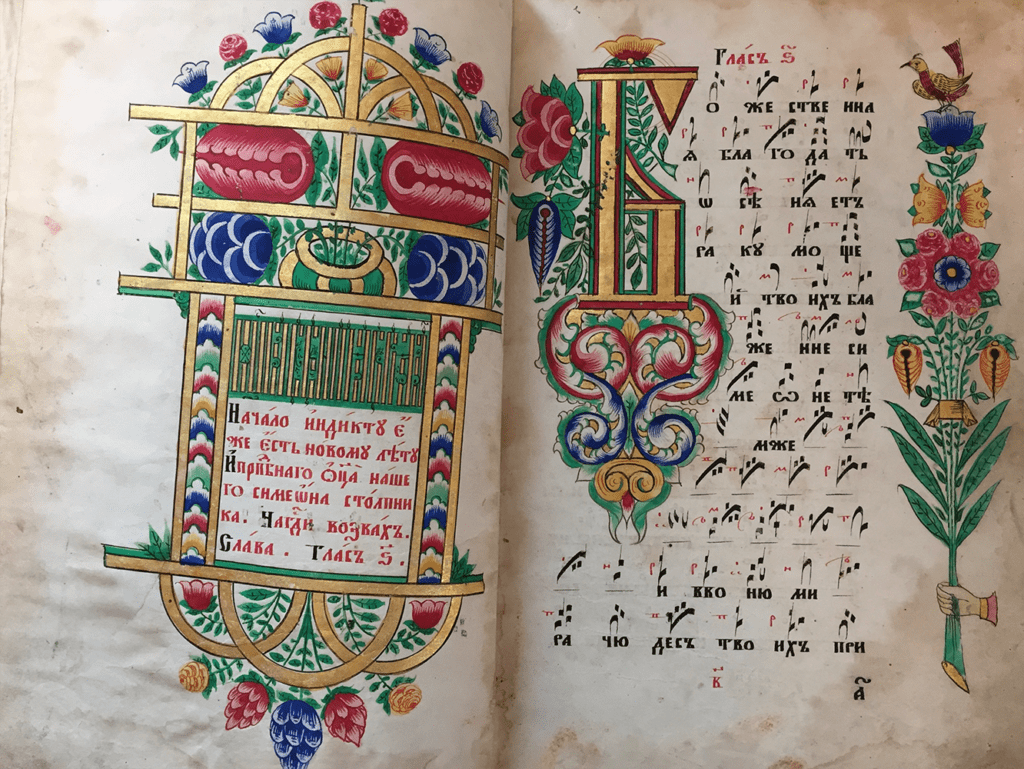
Trezvony. Illuminated Old Believer manuscript of liturgical music. Probably Guslitsa (Moscow region) ca. 1900. Photo by F. Sciacca.
| In 2019, the Columbia Libraries received a significant donation of early Slavonic imprints and manuscripts, as well as Imperial and Soviet artifacts, from alumnus and Hamilton College Professor of Russian Emeritus Franklin A. Sciacca, including 18th century imprints from the Pochaiv Lavra, rare Muscovite and Old Believer books and manuscripts, early Constructivist journals, and Polish theatrical posters from the 1980s. |
Living Legacies: Poets at their Heights: The Brodsky and Loseff Collections
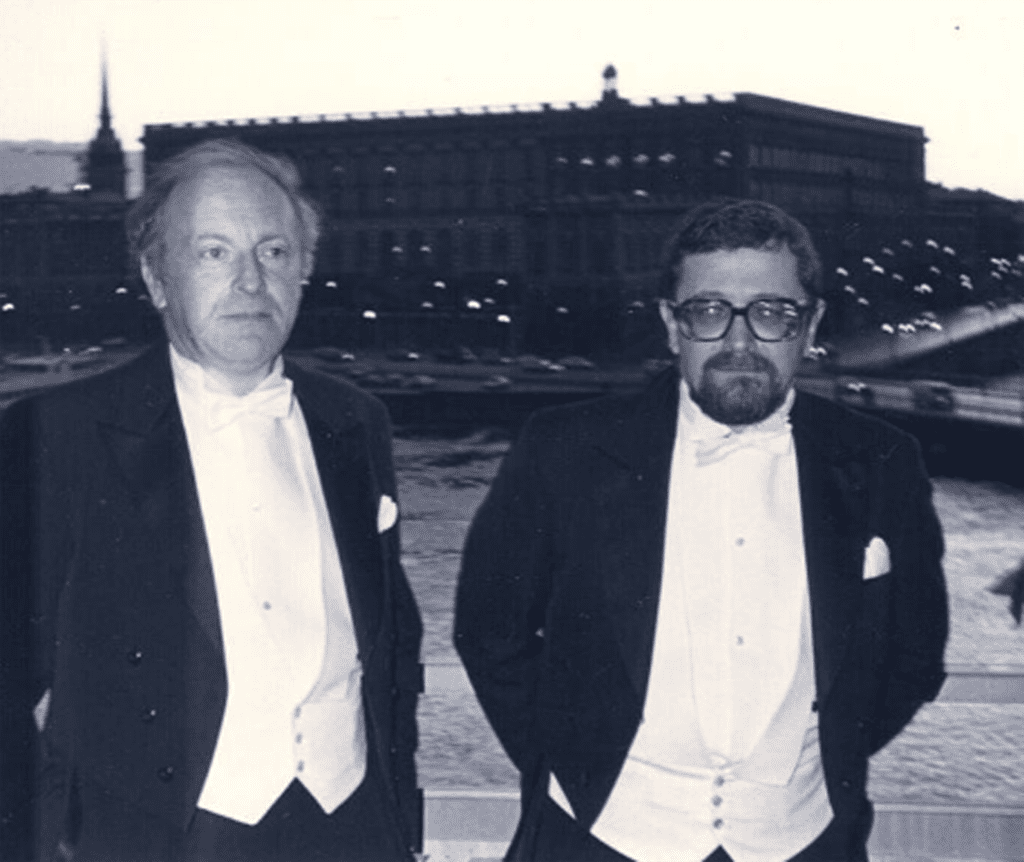
Loseff (right) and Brodsky in Stockholm at the Nobel Prize ceremony. Credit: Courtesy Columbia Rare Books & Manuscripts Library, 1987.
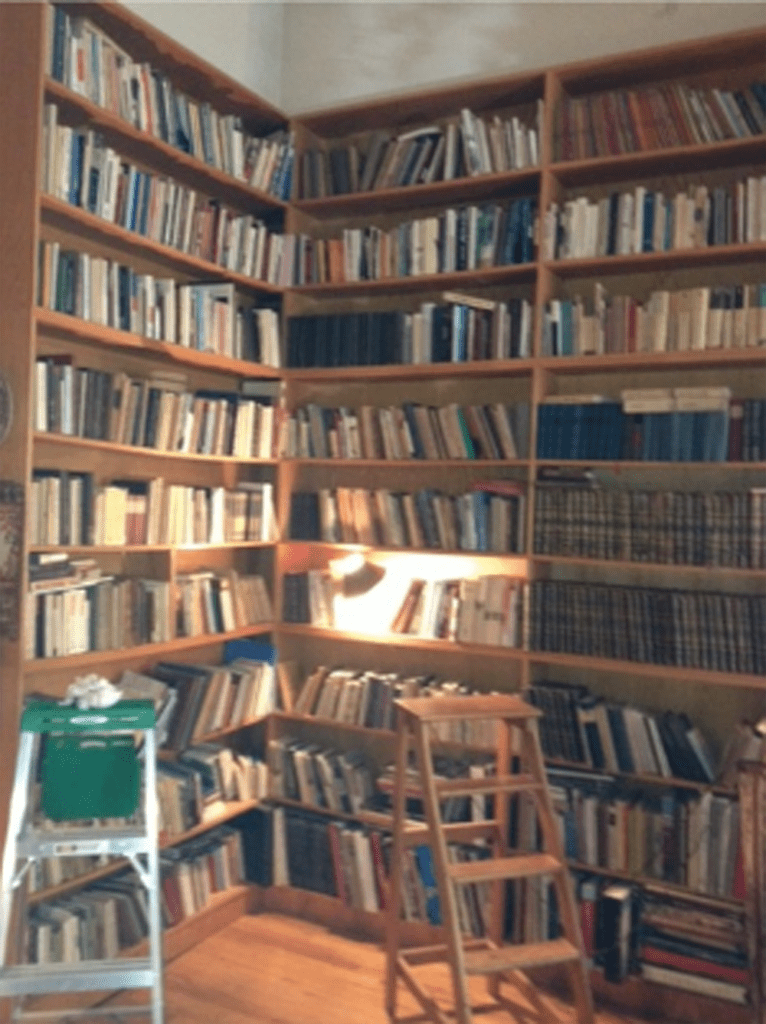
Part of the collection acquired by Columbia, prior to packing, in Brodsky’s Pierrepont Street, Brooklyn Heights home. Photo R. Davis.
| In 2014, Columbia purchased 1,300 volumes from the library of Joseph Brodsky (d. 1996) from the shelves of his former residence in Brooklyn Heights, including works presented by contemporaries and examples of tamizdat and publications from the early years of glasnost’. This complemented the 2013 acquisition of the papers of Lev V. Loseff (d. 2009), émigré poet, literary critic, and professor of Russian Literature at Dartmouth College, and Brodsky’s friend and authoritative biographer. |
Living Legacies: Cornell’s Diverse Collecting

Cover from a Chauve Souris program. Rare Book and Manuscript Collection, Cornell University. Photos by R. Davis.
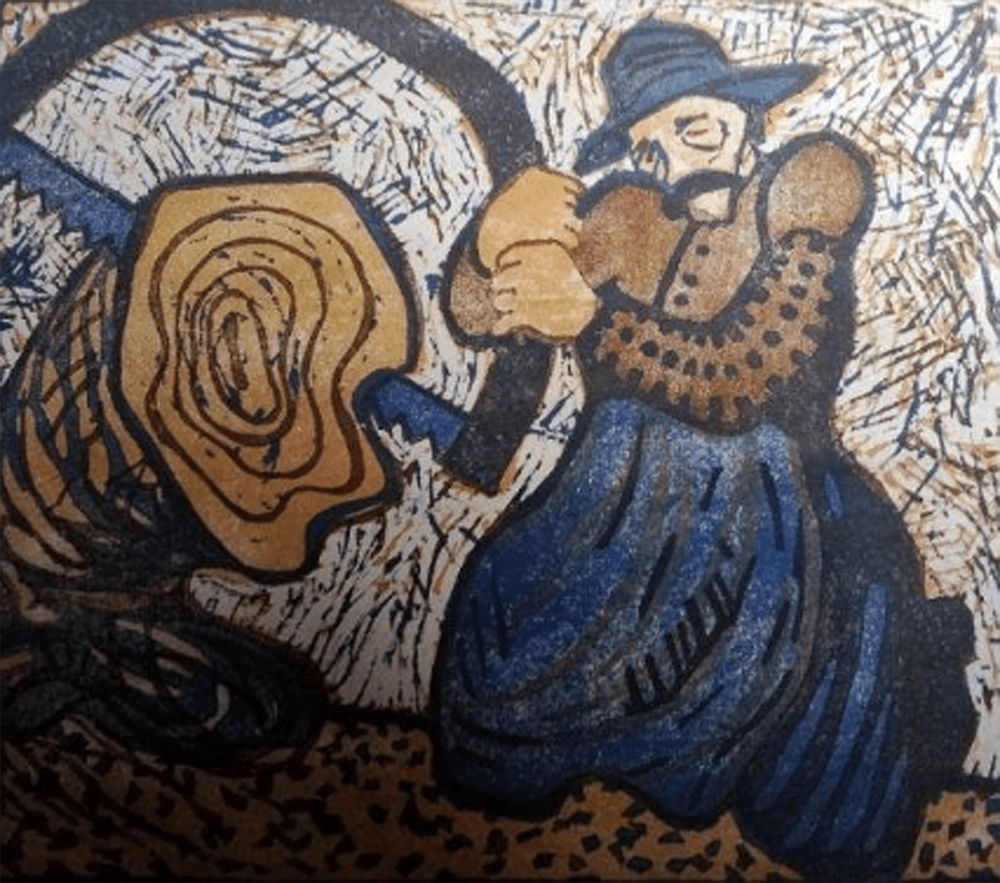
A linoleum print by Tibor Galle. Rare Book and Manuscript Collection, Cornell University. Photo by R. Davis.

Monument erected at Baross Tér in Budapest, 1919. Photo by R. Davis.
| Retrospective acquisitions since 2010 cover a remarkable range of subjects and periods, ranging from a 1923 manuscript of Nabokov’s Tragediia Gospodina Morna with lines of dialogue and stage directions in Nabokov’s hand, to programs from Balieff’s Chauve Souris Cabaret, to an archive documenting the 1919 Hungarian Soviet Republic. |
Living Legacies: Collecting in the Post-Soviet World: Human Sexuality

Unattributed cover of Diskrétní odpovědi na důvěrné otázky. [Discrete answers to confidential questions]. (Praha: Trefný, 1929). Rare Book and Manuscript Collections, Cornell University. Photo by R. Davis.

Original sketch by Sergei Eisenstein. Photo by Pavel Chepyzhov.
| Cornell’s collection of rare (often proscribed) materials on human sexuality is one of the finest in the nation. Recent Slavic purchases include erotic drawings by filmmaker Sergei Eisenstein (d. 1948), likely during his wartime years in Almaty, and many interwar Czech-language texts published on sexual hygiene and pleasure. |
Living Legacies: Holes in an Iron Curtain: The Matthaei & Randall Collections

Still photo from Gay Humphery Matthaei’s collection.

At Idlewild (now John F. Kennedy International Airport); l. to r., Ted Curran, Gay Humphrey, Jeri Lidsky, and Francis B. Randall.
|
In 1954, Russian Institute students Gay Matthaei (d.2010), Ted Curran, Jeri Lidsky Laber, and Francis B. Randall began a 6,000-mile journey through the Soviet Union—the first Russian-speaking graduate student group to visit since Stalin’s death. Supplied with a movie camera and film by CBS, they captured for Americans an unusual perspective on Soviet daily life. In 2015 films and ephemera pertaining to the trip were donated by Gay’s daughter, and later supplemented by films and Professor Randall’s travel diary, which was invaluable in establishing the group’s itinerary. |
